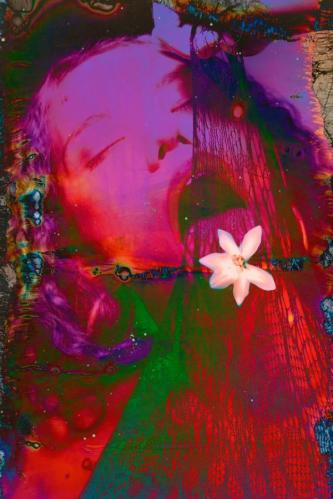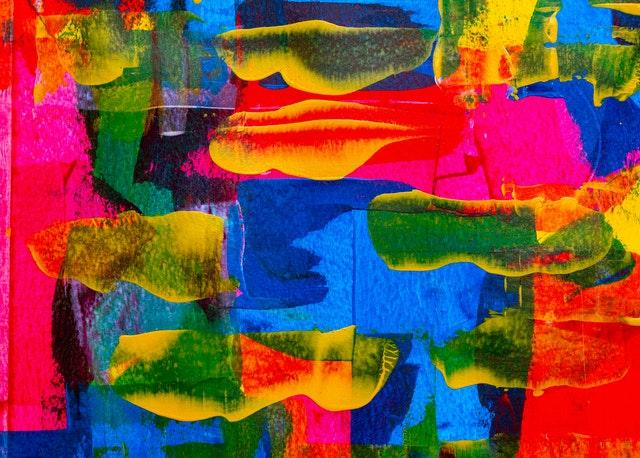There are a lot of websites out there that have been specifically designed for adults. These online platforms offer a wide variety of adult content, such as videos, pictures and articles. There are also a lot of different social media sites that are specifically designed for adults. These social media sites offer a wide variety of different content such as videos, pictures and articles.
These tricks will definitely confuse your brain and make you question reality! Enjoy these mind-bending creative color experiments that will leave you in awe. You might even discover a whole new color palette you want to use in your own designs.
The Following internet Color Illusion illusions are unbelievable! These color tricks are too good to believe!
How To Create Color Illusions With Everyday Objects
Creating visual color illusions is a great way to trick your brain and trigger your imagination. To create visual illusions, you will need some basic items around your home. An ordinary cup, a piece of string, or even a few pennies can be used to create an optical illusion that will make your mind work overtime. It’s important to understand the principles behind optical color illusions in order to unlock their full potential.
With practice, you’ll start seeing opportunities for visual trickery everywhere you look. Here are some creative ways to create color illusions with everyday objects. Lets read how to Create Color Illusions With Everyday Objects!
How optical illusions work?
The human brain plays with colors to create illusions that trick your eyes, but also your brain. When you look at an object, you’re actually seeing light reflect off of that object and into your eyes. The brain uses this information to make sense of the world around you, but it needs to interpret the image in a specific way. If you’re looking at a white piece of paper and the brain expects to see a blue object, it will interpret the image to match that expectation.
Create a color illusion with string
You may have noticed that a piece of string will change color depending on the object it’s held up against. The color you see is actually an optical illusion caused by the way that the light reflects off of the string. This is an example of an additive color mixture. If you hold up a piece of black string against a piece of white paper, the string absorbs all of the light, resulting in a black paper. As you move the string up towards the paper, it reflects some of the light, resulting in a blue reflection.
Even though the paper and string are both white, the paper is reflecting blue and the string is absorbing blue, resulting in a blue mixture. When you place the string up against a blue object, like a piece of paper, the string reflects blue and the paper reflects blue, resulting in a blue mixture. But if you move the string against a different blue object, like a piece of blue paper, the string reflects blue and the paper absorbs blue, resulting in a blue mixture. This idea can be used to create a color illusion with string. Simply put a piece of string up against a piece of blue paper, then move it against a different blue paper. The string will likely change color as it moves, creating a vivid optical illusion.
Create Color Illusions With Everyday Objects
A colorful flower can look like a piece of colorful paper, a piece of black string, or a piece of blue paper depending on the object it’s placed up against. This is an example of an additive color mixture. You can create a color illusion with everyday objects by placing them up against a piece of black string or a piece of white paper. What you see is an optical illusion caused by the way the light reflects off of the object. If you put a flower up against a piece of black string, it absorbs all of the light, resulting in a black flower. As you move the flower up against a piece of paper, it reflects some of the light, resulting in a blue reflection.
Create an illusion by stacking objects
If you put a colorful object like a flower or a piece of paper against a dark object, the flower or paper can create an optical illusion that makes it look like the object is colored. This is an example of an additive color mixture. The flower or paper absorbs all of the light, resulting in a dark object. Then the flower or paper reflects some of the light, resulting in a blue reflection. When the reflection and the object mix, the color you see is blue. Simply put a colorful object up against a piece of black paper, then move it against a different paper. The object will likely change color as it moves, creating a vivid optical illusion.
Create a color illusion with pennies
You may have noticed that the color of pennies changes depending on the background they’re placed up against. This is an example of an additive color mixture. Simply place a penny up against a piece of white paper, then move it against a different paper. The penny will likely change color as it moves, creating a vivid optical illusion. Simply put a penny up against a piece of black paper, then move it against a different paper.
The penny will likely change color as it moves, creating a vivid optical illusion. A penny placed up against a piece of blue paper is likely to change color as it moves, creating a vivid optical illusion.
Trickery with color theory
Color theory is a science that studies the interaction of light and our brains to create visual illusions. Understanding these principles can help you create more realistic illusions, or push the boundaries of what’s possible with a little experimentation.
Create a color illusion with a cup
The color of a cup can change depending on the background it’s placed up against. This is an example of an additive color mixture. Simply put a blue cup up against a piece of white paper, then move it against a different paper. The cup is likely to change color as it moves, creating a vivid optical illusion. Simply put a red cup up against a piece of black paper, then move it against a different paper.
The cup is likely to change color as it moves, creating a vivid optical illusion. A blue cup placed up against a piece of green paper is likely to change color as it moves, creating a vivid optical illusion.
Create illusion by stacking objects
The color of an object can change depending on the background it’s placed up against. This is an example of an additive color mixture. Simply put a colored object up against a piece of white paper, then move it against a different paper. The object is likely to change color as it moves, creating a vivid optical illusion. A red object placed up against a piece of blue paper is likely to change color as it moves, creating a vivid optical illusion. A blue object placed up against a piece of black paper is likely to change color as it moves, creating a vivid optical illusion.
Use lines and perspective to create depth illusions
This is a great example of how lines and perspective can be combined to create depth illusions. Imagine a cup with a different shape on it. Get another cup of the same shape and place them next to each other with just a little distance between them. Now, pour water into the cups so that the different shapes of the cups create a different depth in the water. Now, place a piece of paper over the cups so that the paper gets wet too. Now, take out the paper and you will see a colorful illusion. The paper will get stained at a different depth in the water, and the paper is now coloured due to the water.
Use a focal point to create depth illusions
A focal point is an object that you use to create a depth illusion. In the example below, you can see how a piece of string and a coin are used to create a focal point. A piece of paper is placed between the two objects and is then stained. This creates a depth illusion that makes the coin appear to be much bigger than the string. Next, you can try this out with some paper mache or even a bowl. You need to create a focal point in the bowl and then put the paper between it and another bowl of the same size. Now, pour some water inside the bowls so that the water gets stained. Now, take out the paper and you’ll see a colorful illusion. The paper will get stained at a different depth in the water, and the paper is now colored due to the water.
Create illusion with shapes
You can use shapes to create a color illusion. Simply pick up some liquid soap or dishwashing liquid and pour it into a bowl. Next, pick up a piece of paper and place it in the bowl with the liquid. Pick up another piece of paper and place it on the other side of the bowl so that the paper doesn’t touch the liquid. Now, pick up another piece of paper and place it on top of the other two so that it touches the bowl. Now, take out the paper with all the soap and blot the paper dry. You will now see colored soap leaves on your paper.
20 Color Illusion Pictures




















Conclusion
Creating visual illusions is a great way to trick your brain and trigger your imagination. To create visual illusions, you will need some basic items around your home. An ordinary cup, a piece of string, or even a few pennies can be used to create an optical illusion that will make your mind work overtime. Now, you can take these optical illusions with you wherever you go. You can create a visual illusion on your computer, in your room, or even in your backyard.
It doesn’t matter as long as you are creating a visual illusion that makes you happy. After a while, you will start seeing opportunities for visual trickery everywhere you look. These optical tricks fascinate people, and they don’t even realize it’s a trick! You can test this out for yourself by looking at the pictures below and telling which one looks more real. They might look different, but they’re both real.